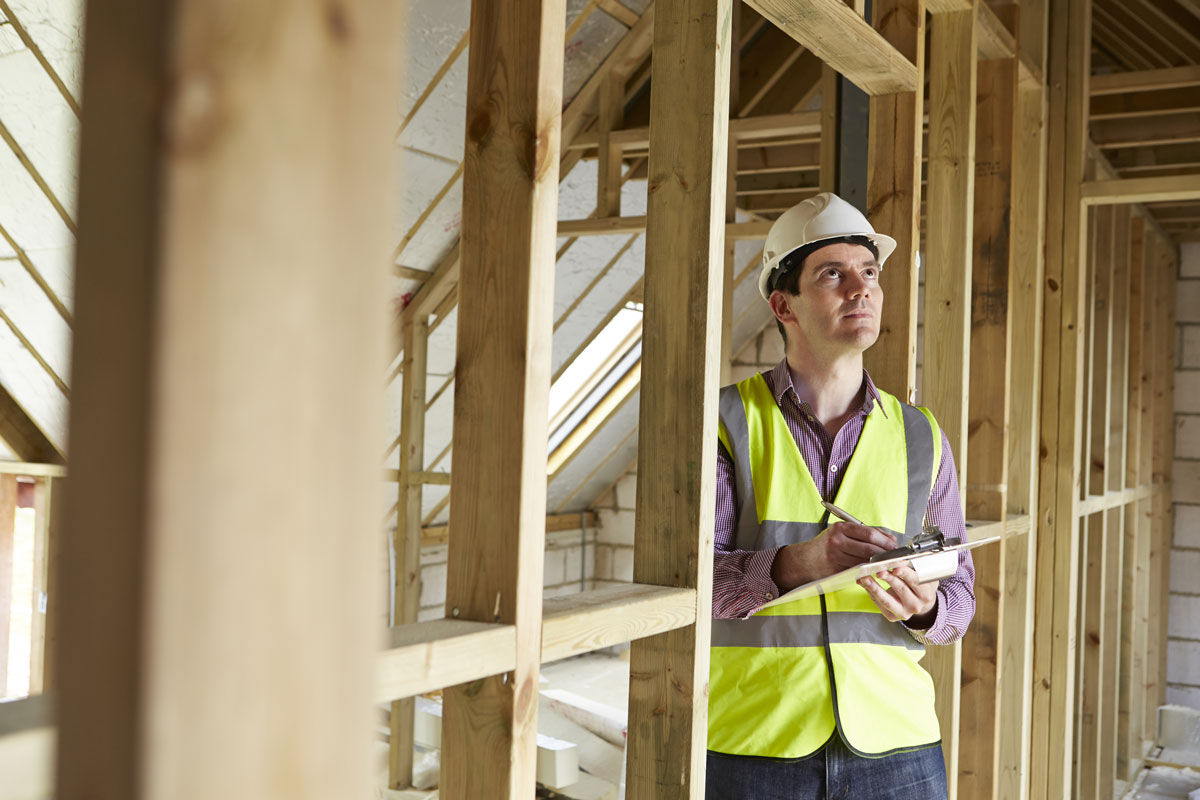
The function of every roof is to protect the homes that they cover. They are the guardians against the weather and whatever nature wants to befall on your home. While holding its fort, the roofing system will then itself be exposed to the elements, and it is only prudent to regularly perform a pre-maintenance check on your property’s roof. The National Roofing Contractors Association (NRCA) recommends that you carry out your inspection and roofing job with a professional roofer.
Assess potential roofer’s expertise and experience by asking them about what they will be inspecting on your roof before finalizing the project estimates for your roofing job.
Here’s a brief overview of the 7 steps a professional roofer takes in an inspection.
1. Setting Up for An Overview
The first thing a pro would do is to take a walk around the house and visually inspect the roof and note what it reveals. There may be signs of damage and aging around the perimeter of the roof, and hence the outer structure of your house. After that, they’d ladder their way to the top and start their preliminary examination of your roof.
2. Sloped Roofs
Most roofs in the United States are sloped and composed of shingles. These are overlapping components that form your roof, they may be composed of various materials such as wood, flagstone, fiber cement, plastic, and even metal. A pro would look for shingles that are curling, blistering or buckling, this indicates the end of their life, this may also occur due to hot air from the attic. Roof shingles will deteriorate faster and need to let more water runoff.
You may see missing shingles; this needs to be dealt with immediately as they are the leading cause of more damage to the roof. Avoid walking on your shingle roof altogether and instead try an inspection with binoculars, this is healthier for your roof, particularly if the shingles are made of wood. If an inspection reveals that 1/3 of your roof shingles are damaged, the time has come to replace your roof.
Metal roofs are susceptible to corrosion and loosening of panels. If the paint wears off these roofs are at risk of greater wear and tear due to exposure to the elements. Metal roofs have long lives and can last 50+ years if the roof is well maintained.
3. Checking for Flashing
Next, look for problems with your flashing. These are metal pieces on the roof on the interruption of the roof plane. These may be installed over areas needing additional protection from water and moisture. Flashings can be found around chimneys and vent pipes. Flashings are prone to fungus growth.
Damage to these should be fixed right, make sure to call a professional roofer if you do not know how to proceed. Faults in your flashing will allow water to enter the interior of your roof. This can cause rotting and then damage to walls in the interior.
4. Gutters
Inspect your gutters, water runoff can erode away on asphalt shingles and others, depositing their granules into gutters. In addition, leaves can become deposited and clog up your gutter system. Remove any obstructions and completely clean the gutter. Look for rotting and any openings that may have developed in the gutter and the down spout. This is an easy job you can get done yourself for the bigger for professional roofing in Dallas Texas.
5. Chimney and Attic
Another element of inspecting your roof is the chimney. The chimney is an important feature of a home’s ventilation system and needs to be examined. Look for loose materials around the chimney and piping. Another element of the interior of the roof you can examine is the Attic. It should have signs of water penetration under it that indicate problems.
6. Water and Bubbles
Standing water can turn your gypsum and concrete decks into a thick paste. It can also add more weight to your roofing system that affects its life. While inspecting your roof the professional will look for signs of bubbles. These signify trapped moisture that has managed to go through the roof-penetrating the surface. This is another sign of water damage that will negatively impact the life of your roof. Bubbles on the roof can also mean the development and release of gases. This means that blisters can form making your roof weaker and susceptible to further damage.
7. Checking Flat Roofs
Flat roofs are more prone to degradation and developing leaks. Make sure to identify areas of granular loss, standing water, punctures, and blister in the roof membrane. Flat roofs feature flashings as well, make sure to give these a thorough inspection. If your own inspection reveals bigger problems, then go ahead and go for professional hire a roofing expert, like Anderson Industrial Roofing.
Anderson Industrial Roofing
We invite you to deal with some of the best in roofing, our marks of excellence include an A+ rating with BBB, over 30+ Year of experience, we are well versed in zoning laws, code requirements and HOA guidelines. We pride our quality workmanship, service, and expert roofing knowledge. We are a member of the NRCA and RCAT. Contact Anderson Industrial Roofing for your commercial and residential roofing in Dallas-Fort Worth.


